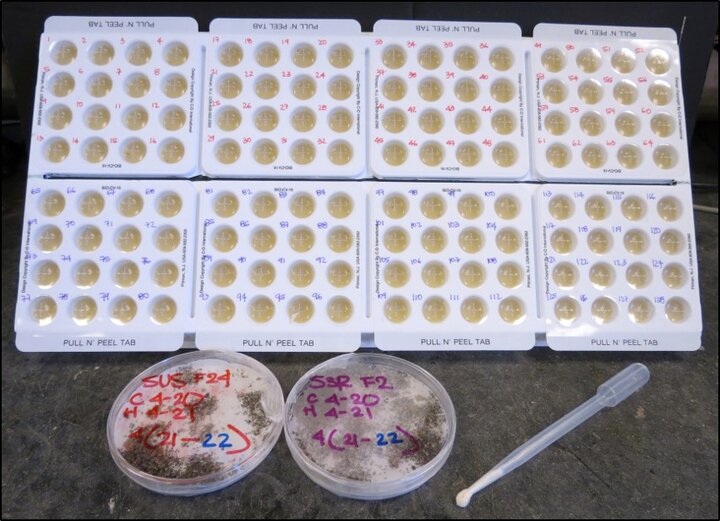The first case of field-evolved resistance of European corn borer (ECB) to Bt transgenic corn has been reported in Canada. Tracey Baute (Ontario Ministry of Agriculture, Food and Rural Affairs), reported that Jocelyn Smith and Art Schaafsma (University of Guelph Ridgetown, Ontario, Canada) confirmed the resistance of ECB to the Cry1F protein in Bt corn hybrids in Nova Scotia, Canada.

The Cry1F protein targets lepidopteran pests, such as ECB, black cutworm, fall armyworm, and common stalk borer, with its efficacy against western bean cutworm recently declining. (For more details, see “Nebraska Perspective on Efficacy of Cry1F Bt Corn Against Western Bean Cutworm.”) Although the Cry1F protein can be found in many Bt trait packages (see the Handy Bt Trait Table for a full listing), it may be most familiar to Nebraska growers as the above-ground Herculex trait.
European corn borer management in corn through the use of Bt transgenic technology has been a great success, both with respect to efficacy and durability. Widely available since the late 1990s, Bt corn hybrids targeting ECB are grown throughout the U.S. Corn Belt and into Canada. The high-dose refuge insect resistance management strategy developed for ECB and Bt corn has been very effective. Current Bt proteins (i.e, Cry1Ab, Cry1A.105, Cry1F and Cry2Ab2) kill over 99.9% of the ECB larvae, and the non-Bt refuge plantings supply Bt-susceptible moths to mate with any resistant moths that may occur, thus diluting resistance genes.
So, how did ECB resistance to Cry1F Bt corn happen?
Several factors likely played a role in the development of Cry1F resistance by ECB in Canada. Nova Scotia is a low heat-unit region, so short season hybrids are required. Choice of Bt corn hybrids is limited, and among those used were single trait Cry1F Bt corn hybrids. Single trait hybrids are being phased out, given the increased risk of resistance they pose, but they are still available and being planted. Refuge compliance in Nova Scotia is unknown, but it is suspected that structured refuge was not always planted, and some farmers may have been relying on other ECB hosts as refuge.
What does it mean for Nebraska corn farmers?
It appears European corn borer resistance management is working in Nebraska, and it is our responsibility to keep it working.
Corn hybrids containing Cry1F protein are still effective against ECB in Nebraska and surrounding states, although the Nova Scotia case should remind us
- to always comply with the required resistance management practices,
- to be vigilant to unexpected damage (Bt corn should still be scouted), and
- if possible, to not rely on the same Bt proteins(s) year after year.
UNL insect toxicologist Ana Vélez has been monitoring ECB susceptibility to Bt proteins for years in multiple Corn Belt states, including Nebraska, South Dakota, and Minnesota. Interestingly, although she has never observed a single case of field-evolved resistance, she has found that Cry1F resistant genes are present in some ECB populations. This means that Nebraska populations have the capacity to develop resistance if they are selected for it. It appears ECB resistance management is working in our region, and it is our responsibility to keep it working.
Recommendations for ECB Resistance Management
- Follow the non-Bt refuge requirements listed on your seed bag tags.
- Treat any non-Bt structured refuge the same as your Bt fields: Keep agronomic practices like planting date and irrigation as similar as possible.
- Avoid planting hybrids that express just one lepidopteran-targeting Bt protein, and avoid using the same Bt proteins repetitively each year.
